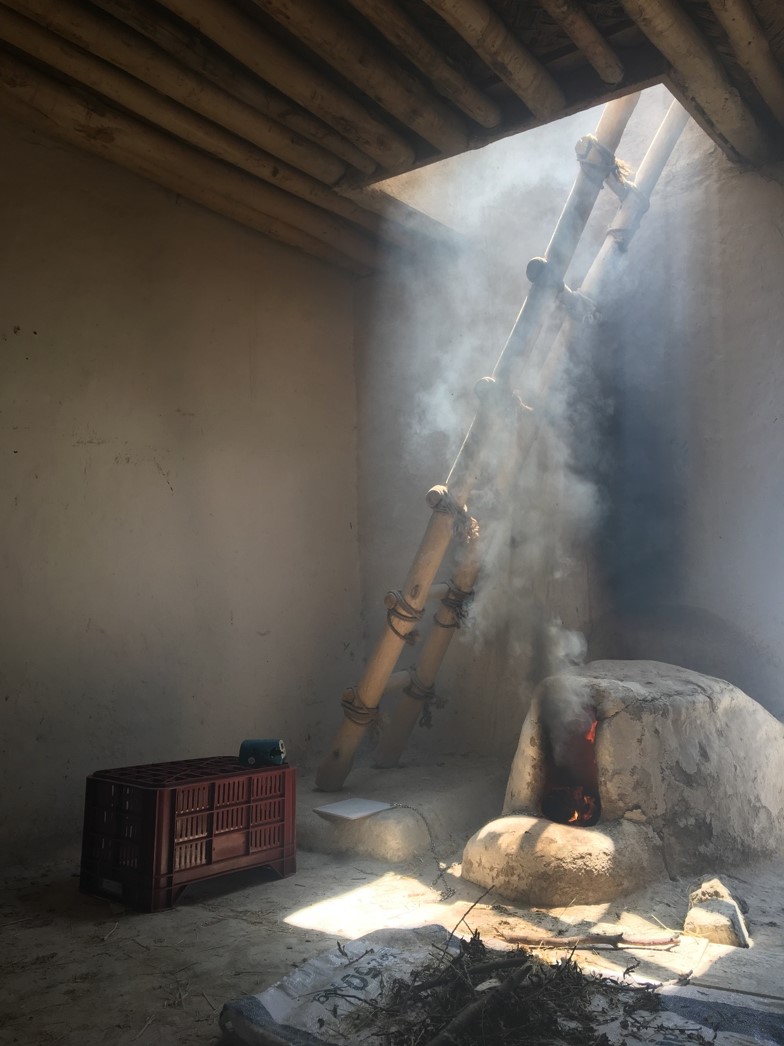2017 Experimental studies
This interdisciplinary project combines archaeological analysis of burning deposits with modern tools for estimating the impact of air quality on human health, bringing together experts in biomarkers, ash/particulate analysis, osteoarchaeology, architecture, GIS and environmental health monitoring. In July 2017 our team conducted preliminary experiments in one of the reconstructed buildings at Çatalhöyük (Fig. 1), to test the emissions of different fuel types over different periods of time. A series of burning experiments using combinations of oak wood and animal dung were carried out, and the emissions of fine particulate matter (PM2.5) were measured using DustTrak DRX 8534 and Side-Pak AM510 aerosol monitors.Our observations indicate that the volume of fuel used had an impact on the emissions, as well as the type of fuel. An example of the emission data can be seen in Figure 2. Now that we have determined the viability of using these methods, the next stage of this research is to conduct a more detailed series of systematic experiments and to apply the modelling techniques to the entire excavated archaeological settlement.

Figure 1: Example of one of the burning experiments conducted, showing particulate matter levels from the burning of oak wood fuel.

Figure 2: Conducting experimental burning in the reconstructed building at Çatalhöyük.



